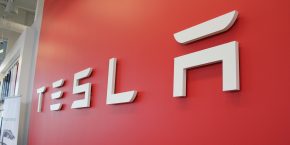

In the past few weeks, three accidents involving Tesla vehicles on Autopilot made the headlines. Tesla was quick to place the blame with the drivers for two of the accidents, one in Pennsylvania and one in Montana, both involving brand new Model X SUVs.
In both cases, the automaker says that the vehicle logs show that drivers ignored several alerts to take control of the vehicles before the accidents. In both cases, the drivers were also cited by the police for careless driving – giving some weight to Tesla’s claims, but now the driver of the Model X in the Montana crash is coming back with a public letter to Tesla and Elon Musk claiming a “cover-up” of the problems with the Autopilot.
After the accident, Tesla sent us the following statement about their interpretation of the accident based on the vehicle logs:
“This vehicle was being driven along an undivided mountain road shortly after midnight with autosteer enabled. The data suggests that the driver’s hands were not on the steering wheel, as no force was detected on the steering wheel for over 2 minutes after autosteer was engaged (even a very small amount of force, such as one hand resting on the wheel, will be detected). This is contrary to the terms of use that are agreed to when enabling the feature and the notification presented in the instrument cluster each time it is activated.As road conditions became increasingly uncertain, the vehicle again alerted the driver to put his hands on the wheel. He did not do so and shortly thereafter the vehicle collided with a post on the edge of the roadway.”
The driver, known as Mr. Pang, insists that he did not receive any alert from the vehicle prior to the accident and that it veered on its own into the barrier.
He claims that it not only veered on its own, but that it didn’t slow down after hitting the first post and that it hit 12 more barrier posts before he managed to stop the car manually.
Here’s the result:
At this point, it would be a ‘he said she said’ situation, though Tesla having the vehicle logs on its side gives arguably more credibility to the company, but Pang claims a cover-up. He wrote in his open letter to Tesla:
“Tesla never contacted me after the accident. Tesla just issued conclusion without thorough investigation, but blaming me for the crash. Tesla were trying to cover up the lack of dependability of the autopilot system, but blaming everything on my hands not on the steering wheel. Tesla were not interested in why the car veered right suddenly, nor why the car did not slow down during the crash.”
We contacted Tesla yesterday for a comment on Pang’s new allegations, but we didn’t get an answer. We will update if we hear back.
Update: A Tesla spokesperson got back to us and pointed to the orignal statement about the crash, which we already quoted above and it is available in full in our original article on the accident.
Here’s Pang’s open letter in full:
A Public Letter to Mr. Musk and Tesla For The Sake Of All Tesla Driver’s Safety
From my friend, Mr. Pang, a survivor of the Montana Tesla autopilot crash
My name is Pang. On July 8, 2016, I drove my Tesla Model X from Seattle heading to Yellowstone Nation Park, with a friend, Mr. Huang, in the passenger seat. When we were on highway I90, I turned on autopilot, and drove for about 600 miles. I switched autopilot off while we exited I90 in Montana to state route 2. After about 1 mile, we saw that road condition was good, and turned on autopilot again. The speed setting was between 55 and 60 mph. After we drove about another mile on state route 2, the car suddenly veered right and crashed into the safety barrier post. It happened so fast, and we did not hear any warning beep. Autopilot did not slow down at all after the crash, but kept going in the original speed setting and continued to crash into more barrier posts in high speed. I managed to step on the break, turn the car left and stopped the car after it crashed 12 barrier posts. After we stopped, we heard the car making abnormal loud sound. Afraid that the battery was broken or short circuited, we got out and ran away as fast as we could. After we ran about 50 feet, we found the sound was the engine were still running in high speed. I returned to the car and put it in parking, that is when the loud sound disappeared. Our cellphone did not have coverage, and asked a lady passing by to call 911 on her cellphone. After the police arrived, we found the right side of the car was totally damaged. The right front wheel, suspension, and head light flied off far, and the right rear wheel was crashed out of shape. We noticed that the barrier posts is about 2 feet from the white line. The other side of the barrier is a 50 feet drop, with a railroad at the bottom, and a river next. If the car rolled down the steep slope, it would be really bad.
Concerning this crash accident, we want to make several things clear:1. We know that while Tesla autopilot is on but the driver’s hand is not on the steering wheel, the system will issue warning beep sound after a while. If the driver’s hands continue to be off the steering wheel, autopilot will slow down, until the driver takes over both the steering wheel and gas pedal. But we did not hear any warning beep before the crash, and the car did not slow down either. It just veered right in a sudden and crashed into the barrier posts. Apparently the autopilot system malfunctioned and caused the crash. The car was running between 55 and 60 mph, and the barrier posts are just 3 or 4 feet away. It happened in less than 1/10 of a second from the drift to crash. A normal driver is impossible to avoid that in such a short time.
2. I was horrified by the fact that the Tesla autopilot did not slow down the car at all after the intial crash. After we crashed on the first barrier post, autopilot continued to drive the car with the speed of 55 to 60 mph, and crashed another 11 posts. Even after I stopped the car, it was still trying to accelerate and spinning the engine in high speed. What if it is not barrier posts on the right side, but a crowd?
3. Tesla never contacted me after the accident. Tesla just issued conclusion without thorough investigation, but blaming me for the crash. Tesla were trying to cover up the lack of dependability of the autopilot system, but blaming everything on my hands not on the steering wheel. Tesla were not interested in why the car veered right suddenly, nor why the car did not slow down during the crash. It is clear that Tesla is selling a beta product with bugs to consumers, and ask the consumers to be responsible for the liability of the bugging autopilot system. Tesla is using all Tesla drivers as lab rats. We are willing to talk to Tesla concerning the accident anytime, anywhere, in front of the public.
4. CNN’s article later about the accident was quoting out of context of our interview. I did not say that I do not know either Tesla or me should be responsible for the accident. I might consider buying another Tesla only if they can iron out the instability problems of their system.
As a survivor of such a bad accident, a past fan of the Tesla technology, I now realized that life is the most precious fortune in this world. Any advance in technology should be based on the prerequisite of protecting life to the maximum extend. In front of life and death, any technology has no right to ignore life, any pursue and dream on technology should first show the respect to life. For the sake of the safety of all Tesla drivers and passengers, and all other people sharing the road, Mr. Musk should stand up as a man, face up the challenge to thoroughly investigate the cause of the accident, and take responsibility for the mistakes of Tesla product. We are willing to publicly talk to you face to face anytime to give you all the details of what happened. Mr. Musk, you should immediately stop trying to cover up the problems of the Tesla autopilot system and blame the consumers.
FTC: We use income earning auto affiliate links. More.








Comments